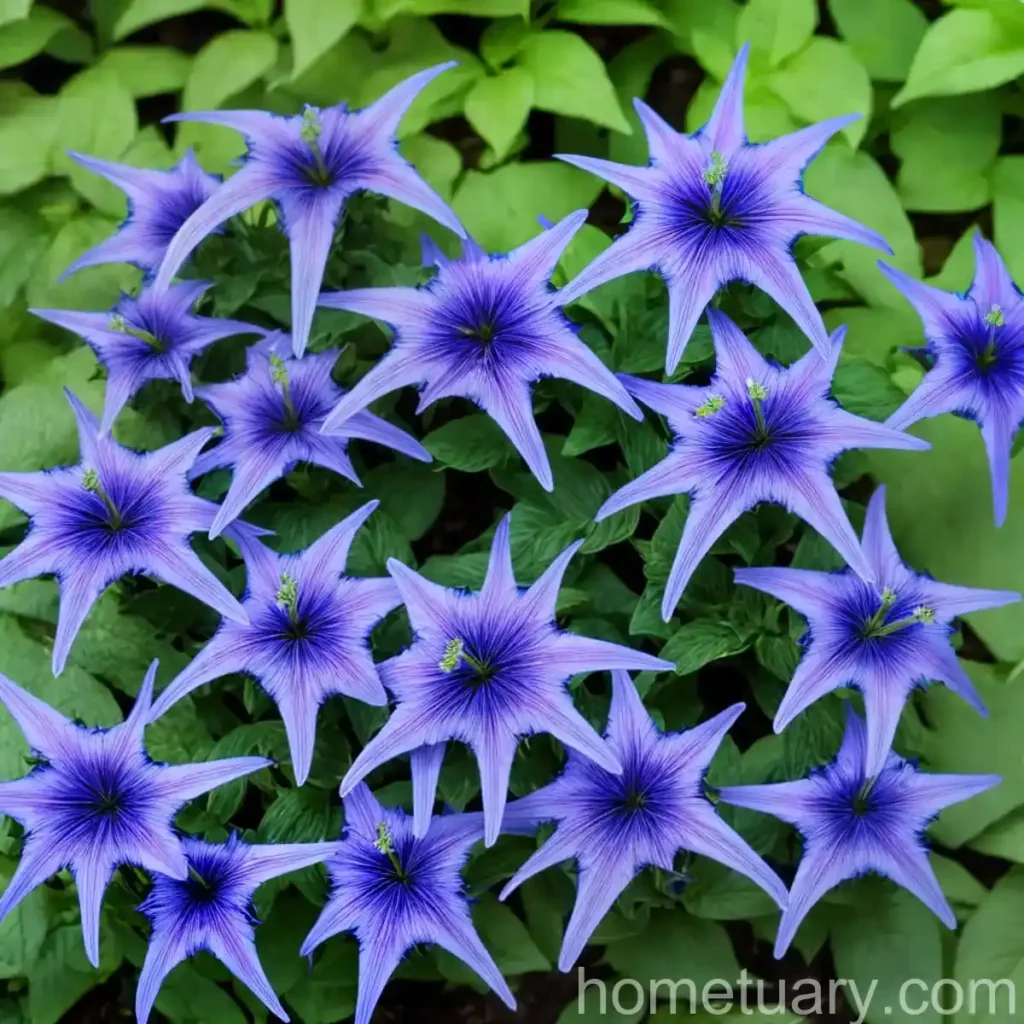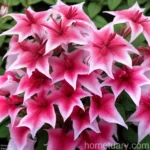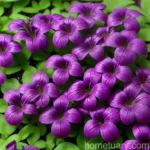Blue Cardinal Flower (Lobelia siphilitica): A Fascinating Native Perennial

Introduction
Plants are an integral part of our ecosystems, providing beauty, sustenance, and ecological benefits. Among the vast array of plant species, blue cardinal flower (Lobelia siphilitica) stands out as a stunning native perennial known for its vibrant blue blooms. In this blog post, we will delve into the captivating world of blue cardinal flower, exploring its culture, uses, optimal growing conditions, and much more. Let’s embark on a journey to uncover the allure and intricacies of Lobelia siphilitica, also known as the Blue Cardinal Flower.
What is Blue Cardinal Flower (Lobelia siphilitica)?
Lobelia siphilitica, commonly referred to as Blue Lobelia or Cardinal Flower, is a herbaceous perennial plant that belongs to the Campanulaceae family. This striking native species is indigenous to North America, where it is found in various habitats, including wetlands, moist woodlands, and along stream banks. When in bloom, the plant produces striking, tubular, blue flowers that attract pollinators, making it a valuable addition to garden landscapes and natural habitats.
Key Takeaways – Blue Cardinal Flower (Lobelia siphilitica)
To gain a comprehensive understanding of Lobelia siphilitica, let’s explore its cultural significance, uses, and essential care requirements.
Culture
- Indigenous to North America
- Thrives in wetland areas, moist woodlands, and along stream banks
Uses
- Ornamental plant in garden landscapes
- Valuable for attracting pollinators, particularly butterflies and hummingbirds
- Medicinal uses in traditional herbal medicine
Now, let’s delve into the specific care requirements for cultivating and maintaining blue cardinal flowers, paying close attention to water, sunlight, fertilizer, soil, pruning, propagation, and container gardening.
Water
Lobelia siphilitica is a species that thrives in moist to wet soil conditions. While it is essential for the plant to receive consistent moisture, it is crucial to avoid waterlogged soil, which can lead to root rot and other issues. Adequate drainage and regular watering are essential to promote healthy growth and vibrant blooms.
Sunlight
In terms of sunlight requirements, blue cardinal flowers exhibit a preference for partial shade to full sun conditions. While they can tolerate some shade, providing at least 6 hours of sunlight per day can contribute to robust growth and prolific flowering.
Fertilizer
When it comes to fertilization, incorporating a balanced, all-purpose fertilizer into the soil during the plant’s active growing season can support healthy foliage and vibrant blooms. It is advisable to follow the recommended application rates and avoid over-fertilization, which can negatively impact the plant’s overall health.
Soil
Blue cardinal flowers thrive in organically rich, moist, and well-draining soil. A slightly acidic to neutral pH level is preferable, as it enables the plant to access essential nutrients and minerals. Additionally, incorporating organic matter into the soil can enhance its water retention capacity and promote overall plant health.
Pruning
Pruning is an essential aspect of blue cardinal flower care, particularly for managing the plant’s growth and enhancing its aesthetic appeal. Regular deadheading of spent blooms and the removal of old, withered foliage can encourage continuous flowering and maintain a tidy appearance.
Propagation
Propagation of Lobelia siphilitica can be achieved through methods such as division, seed sowing, and stem cuttings. Each method offers unique advantages and challenges, providing plant enthusiasts with diverse options for expanding their blue cardinal flower population.
Container Gardening
For individuals with limited garden space or those seeking to showcase blue cardinal flowers in a controlled environment, container gardening presents an attractive option. Selecting a spacious container with adequate drainage and employing appropriate soil and watering practices are crucial for successful container cultivation of Lobelia siphilitica.
Now, let’s explore the popularity of blue cardinal flowers and some common diseases that may affect these captivating plants.
Popularity
The striking appearance and ecological value of blue cardinal flowers have contributed to their popularity among gardeners, landscapers, and nature enthusiasts. Their ability to attract pollinators and add a vibrant splash of color to garden landscapes makes them a sought-after addition to diverse settings.
Common Diseases
While blue cardinal flowers are relatively resilient, they may be susceptible to certain diseases and health issues. Understanding these potential challenges and knowing how to diagnose and address them is essential for maintaining the health and vitality of Lobelia siphilitica.
Disease Diagnosis
- Root Rot: Excessive moisture and poor drainage can lead to root rot, which manifests as wilting, yellowing foliage, and stunted growth.
- Powdery Mildew: Fungal infections, such as powdery mildew, may occur under humid conditions and can be identified by the presence of white, powdery patches on the plant’s leaves.
- Leaf Spot: Leaf spot diseases can cause distinct lesions or spots on the foliage, potentially leading to diminished plant vigor and aesthetic appeal.
Moving forward, it’s important to address common pests that may pose a threat to blue cardinal flowers and to explore additional insights and considerations from a botanist’s perspective.
Common Pests
– Aphids
– Snails and Slugs
– Whiteflies
Botanist’s Tips
To enhance the success of cultivating and caring for blue cardinal flowers, consider the following tips from a botanist’s perspective:
– Attract Beneficial Insects: Encourage the presence of beneficial insects, such as ladybugs and lacewings, to naturally manage pest populations and promote a healthy garden ecosystem.
– Companion Planting: Explore companion planting strategies to create synergistic relationships between blue cardinal flowers and other plant species, enhancing biodiversity and ecological resilience.
– Wildlife Habitat: Embrace the role of blue cardinal flowers as a valuable wildlife attractant, contributing to the support and conservation of diverse animal species in your local environment.
Fun Facts
To further appreciate the charm and significance of blue cardinal flowers, consider the following fun facts about Lobelia siphilitica:
– The specific epithet “siphilitica” is derived from the plant’s historical medicinal use as a treatment for syphilis, although it is important to note that the plant’s efficacy for this purpose is not supported by modern scientific evidence.
– Blue cardinal flowers are known for their attractiveness to hummingbirds, making them a delightful addition to hummingbird gardens and habitats.
Links to External Resources
Explore the following links to access external resources and in-depth information about blue cardinal flowers:
- USDA Plants Database: Lobelia siphilitica
- Lady Bird Johnson Wildflower Center: Lobelia siphilitica
- Missouri Botanical Garden: Lobelia siphilitica
- Royal Horticultural Society: Growing Lobelia siphilitica
Conclusion
In closing, blue cardinal flower (Lobelia siphilitica) stands as a captivating native perennial with a rich cultural and ecological significance. From its vibrant blooms and pollinator-attracting properties to its medicinal uses and resilience in varied habitats, this species offers a wealth of intrigue and value. By understanding and embracing the cultural, ecological, and horticultural aspects of blue cardinal flowers, we can appreciate and celebrate the unique contributions of this remarkable plant species to our natural world and cultivated landscapes.
In the garden, blue cardinal flowers brighten up the landscape with their striking blue blossoms and provide habitat and food for a diverse array of wildlife. Whether grown in rain gardens, native plant landscapes, or container gardens, Lobelia siphilitica adds a touch of elegance and ecological functionality to its surroundings. As we continue to explore the wonders of plant biodiversity, let’s cherish and steward the invaluable resources and marvels that the natural world has to offer.
Disclaimer: The information provided in this blog post is for educational and informational purposes only. It is not intended to serve as professional botanical or medical advice. For specific guidance and recommendations related to plant cultivation and medicinal uses, consult qualified professionals and reliable sources. Additionally, check for local regulations and considerations before applying any medicinal or horticultural practices.















